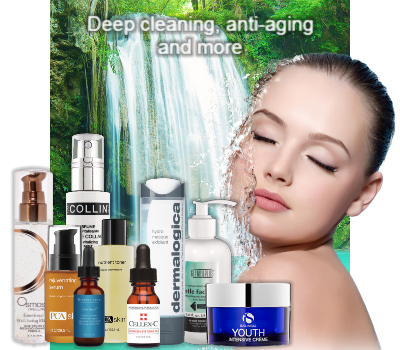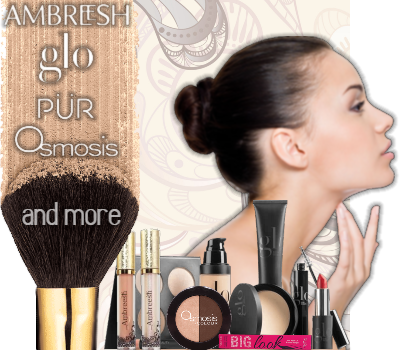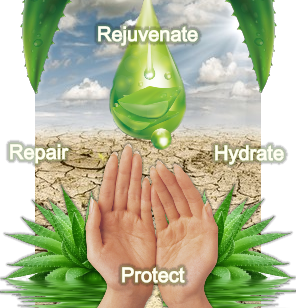4 Basic Steps of SkinCare
Posted by beautystoredepot.com on 17th Aug 2010
There's tried-and-true ways to properly care for your skin, from the right way to cleanse your face, to the best moisturizers and sunscreens.
Before we start with the proper daily 4-step skincare routine, you'll need to know your skin type. How you care for your skin is utterly dependent on the type of skin you have: oily, normal/combination, dry, sensitive or sun- damaged. Find out what skin type you have.
The Basic 4-Step Skincare Regimen S
Step 1: Cleansing
Simple is key here. You need to find a good cleanser that your skin responds well to, and stick with it. See the best cleansers for your skin type.
Avoid bar soaps as they tend to dry out the skin. According to Rona Berg, in her book, "Beauty," a French cosmetics executive once told her, "Soap should only ever touch your skin from the neck down." We agree. Choose a creamy cleanser if you have dry skin or a clear cleanser if you have oily skin.
Be careful not to cleanse too often. Washing at night should do you. If you have dry skin, consider cold cream like Benefit Clean by Cosmedix or Bioelements Flash Foam Cleanser, which are both gentle enough for almost any skin type. Most women prefer the water method: Use warm water to loosen dirt and clogged pores. Use a dime-sized bit of cleanser, and then rinse with cool or lukewarm water. You'll also want to take off your makeup with a proper makeup remover.
In the morning, a splash of lukewarm water is all you need (we find it's great for removing excess oils from your nightly moisturizing). Never wash your face with hot or cold water (both can cause broken capillaries). Also be careful about over cleansing skin, which can dry out skin and remove essential oils that your skin natural produces and needs.
Step 2: Exfoliate
Exfoliation is the step most people skip in their weekly skincare routine. But trust me, if you start properly exfoliating your skin, you will notice an almost immediate difference. According to Berg, one of the reasons men's skin looks more youthful than women's is because men tend to exfoliate daily when they shave. There are several ways to exfoliate skin: Microdermabrasion, chemical peels and retinoids.
Scrubs work by removing the top layer of dead skin cells that tend to dull your complexion. We find exfoliating skin once a week with a Microdermabrasion kit keeps skin glowing year-round. Make sure you use a gentle scrub with tiny grains. Big grains in cheap scrubs can tear skin and cause more harm than good. My favorite Microdermabrasion product is: ZO Skin Health Offects Exfoliating Polish.
In the hour it takes to get a chemical peel, you can take off five years from your face. Can't afford the price tag for a monthly peel? Try some over-the-counter peels that work over the course of a month. I prefer Pure Enzymes by Cosmedix or Bioelements Pumice Peel.
Retinoids also work by removing the top layer of dead skin cells while also generating collagen in the skin. "Collagen is the skin's structural fiber," dermatologist Dennis Gross said in O Magazine. "As we get older, it breaks down, creating lines and large pores." Skincare experts disagree on all sorts of things, but most of them consider retinoids to be a miracle skin saver.
Should you use a toner? Some people swear by toners, but many beauty experts do not (I once read a skincare expert claim, "Toners are only for copy machines"). Toners are meant to remove all remaining traces of oil, makeup and dirt, but a good cleanser should do this. I firmly believe it's up to you. If you like the way your skin feels with a toner. Buy it. Use it. Enjoy it. If you’re new to Toners, and would like to try a great one, try SkinMedica Rejuvenative Toner.
Step 3: Moisturize
While I know of at least one famous beauty editor who swore skin doesn't need moisturizer, basically everyone else I've read disagrees and is an adamant believer in it. A basic law of beauty is that everyone, no matter her skin type, should moisturize. Even if your skin is oily, it will benefit from moisturizers. (The only exception is those with acne). Why? Moisturizers seal moisture into skin (Berg calls this the "Saran Wrap effect"). So how much should you moisturize? Your skin will tell you. When your skin is tight, it's crying out for moisture. Be careful not to over moisturize -- this can clog pores.
I like a good basic, all skin types moisturizer such as SkinMedica Rejuvenative Moisture.
Are eye creams necessary? Well maybe. Some beauty experts strongly recommend eye creams. Why? The skin around the eye contains no fatty tissue and is therefore very thin and susceptible to wrinkles. Special eye creams are formulated to "thicken" this area. Yet other experts (including the beauty editors of Allure in their new book) claim your daily lotion works around the eyes just as well. If you want the best of the best, try the iS Clinical Youth Eye Complex. You’ll never believe you did without it at one time.
Step 4: Apply Sunscreen
O Magazine ran an article featuring interviews with several top skin care experts and dermatologists (check it out here). Every single one of them said sunscreen was the most important part of your skincare regimen. It was the secret they would pass on to their daughters. A few of my favorites are Pevonia Botanica Hydrating Sunscreen SPF 30 and Dermalogica AGEsmart Dynamic Skin Recovery SPF 30.
The number-1 cause of wrinkles is sun damage, so it's important to use sunscreen from your early years on even in winter and on cloudy days. A great trick is to purchase two moisturizers: One for night and one for day that includes UV protection. Don't use moisturizers with sunscreen at night, the ingredients are not meant to be used 24/7 and can aggravate skin.













